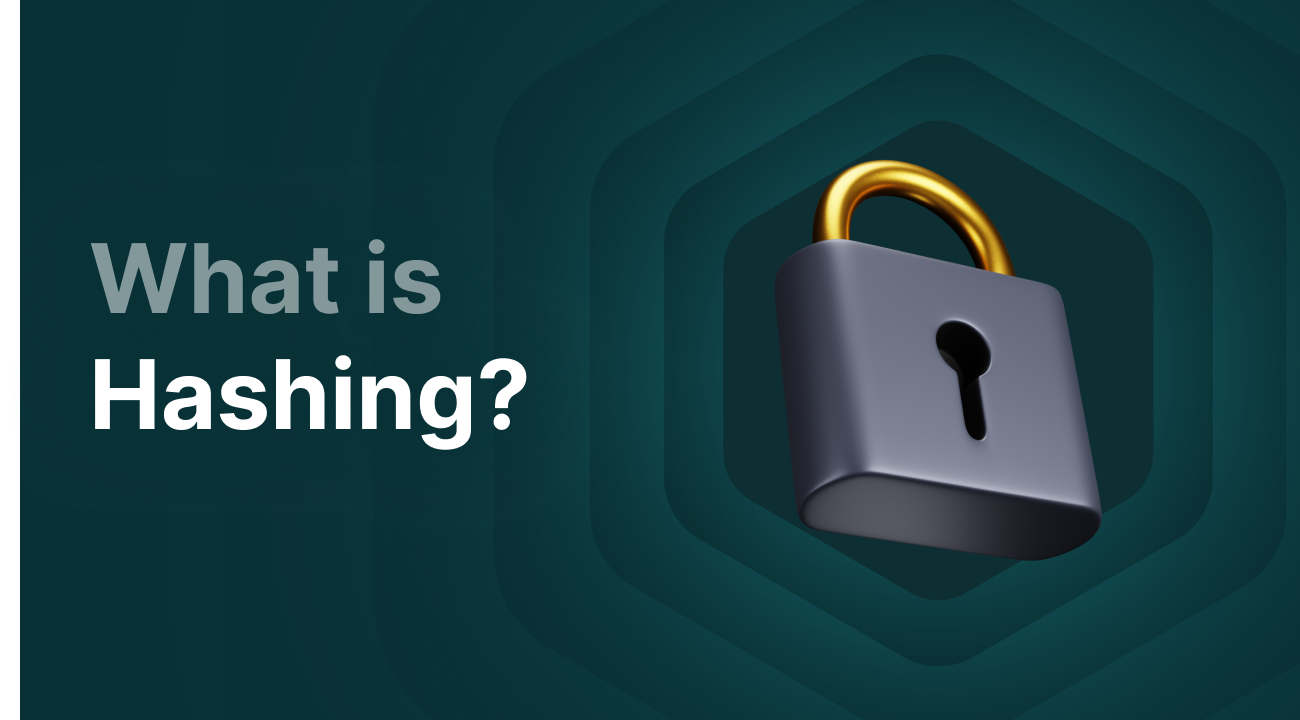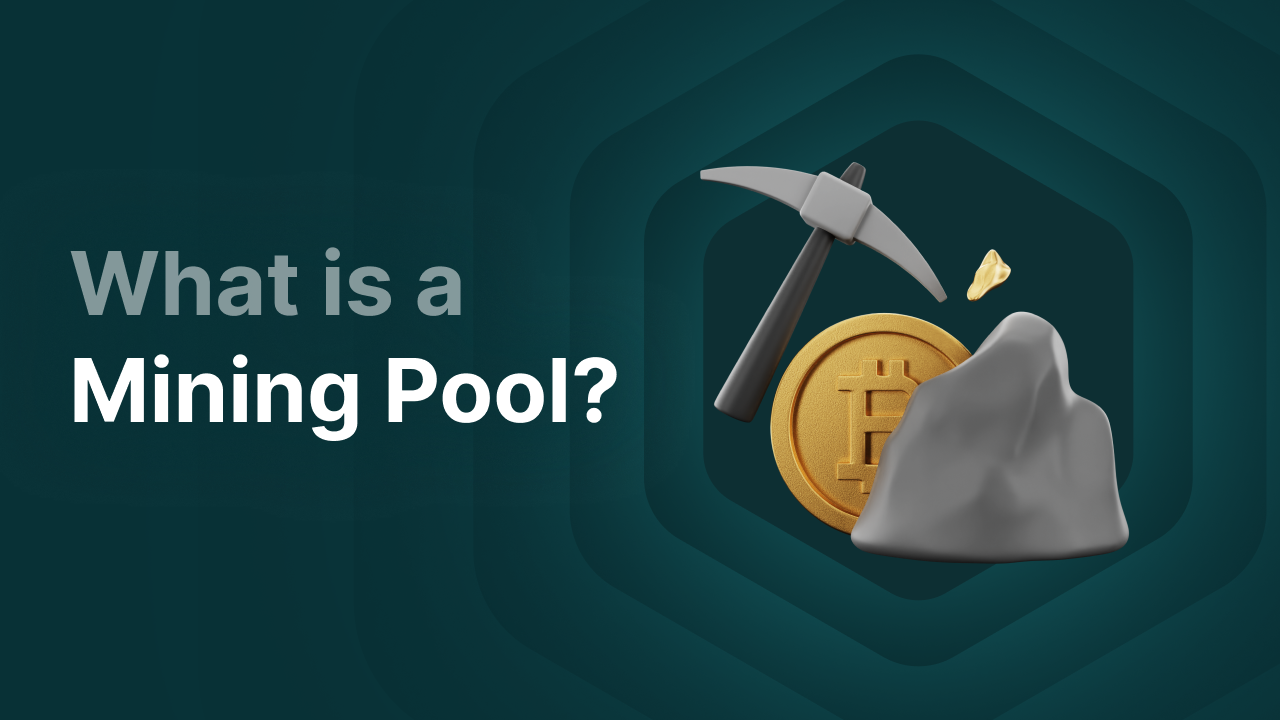What is Hashing? A Complete Explanation

What is hashing?
Hashing is the process where data is converted into a hash using a mathematical algorithm. A hash is the result in a fixed-length code of numbers and letters. Hashing is used to keep blockchains secure. For example, Bitcoin uses the SHA-256 algorithm, where SHA stands for Secure Hashing Algorithm.
In principle, every hashing algorithm works the same way: it is a kind of program where you input information and a code comes out. You can feed all kinds of information into the machine, and it always produces a new hash. Generating a hash is easy, but guessing the input from the hash is virtually impossible.
Take the following two sentences as an example. They look similar, but if you run them through a SHA-256 algorithm, you can’t tell that they are alike. Even if just the 'w' is changed to a capital letter.
Key Takeaways
- Hashing converts data via an algorithm into a fixed, unique code (hash), which is practically impossible to trace back to the original data.
- Cryptographic hash functions are fast, deterministic, one-way, sensitive to small changes, and nearly impossible to manipulate.
- Merkle trees bundle many transactions into one compact hash (Merkle root), saving storage and allowing fast verification.
- The Block Header contains core information such as the previous block’s hash, the Merkle root, timestamp, and nonce, which are essential for the blockchain structure.
- Bitcoin mining is solving cryptographic puzzles via Proof of Work, where miners add new blocks and receive rewards.
- Hashing is also crucial in Proof of Stake, where it ensures security without the heavy computational work of mining.
How does hashing work in crypto?
Hashing is a technique where data is converted into a fixed string of characters (the hash). This technique plays a crucial role in the world of crypto and blockchains because it ensures security, integrity, and efficiency. Blockchains use cryptographic hash functions, where every transaction on the blockchain is converted into a unique hash value. This is also known as the transaction hash and functions as a kind of digital signature of the transaction.
You can use the hash of a transaction to look it up in a blockchain explorer. This is a kind of book where all transactions on a blockchain are recorded. It shows between which addresses the transaction took place and the amount involved, without revealing personal names.
Additionally, blockchains use a Merkle tree to store transaction data efficiently.
What is the advantage of cryptographic hash functions?
Blockchains use cryptographic hashes. These are designed to be secure, reliable, and efficient. Cryptographic hashes have 5 important properties:
-
Deterministic (predictable)
This means that the input always produces exactly the same output. No matter when you enter it, you always get the same hash. -
Speed
The algorithms work very fast; data is converted to a hash in no time. This is especially important for transaction speed on a blockchain. -
It is a one-way function
The algorithms can create a hash from the input but cannot go from hash back to input. It is practically impossible due to the properties of cryptographic hash functions and because no one has the secret key. -
Small changes lead to a completely different hash
As mentioned earlier, the entire hash changes if even a small adjustment is made to the input. This makes it easy to detect if anything has changed in the input. -
Hard to manipulate
It is virtually impossible to find two different inputs that produce the exact same hash. This is called collision resistance, and it prevents data from being tampered with.
What are Merkle trees?
A Merkle Tree or hash tree is a data structure used to store transaction data efficiently and securely in the blockchain. It works like this: each transaction on a blockchain is hashed, then this hash is combined with another hash and rehashed. This process continues until one main hash remains, namely the Merkle root (also called the Root Hash). This represents all transactions in a block.
You can think of it like a Christmas tree that is wide at the bottom with many branches (lots of data). As you move to the top, the tree becomes narrower because the hash containing all transactions in a block becomes more compact. Many transactions are ultimately combined and hashed into one Merkle root.
Since even a small change in the input changes the hash, this is very useful in a Merkle tree. If one of the underlying transactions changes, the Merkle root also changes. This allows transactions to be verified quickly and reliably without needing to store every transaction in the Block Header.
Advantages of Merkle trees:
- It bundles a lot of data (all transactions in a block) into one hash, saving storage and boosting speed.
- It easily proves the reliability and validity of transactions.
- It keeps all data in chronological order and ensures blocks are correctly linked.
What is in the Block Header?
The Block Header is an essential part of every block in a blockchain. It contains the most important data needed to link blocks, verify transactions, and enable new blocks to be mined. Instead of storing all data, the Block Header only bundles the key information, ensuring speed and efficiency within the network.
A Block Header contains the following components:
1. Prev_Hash
The hash of the previous block. This ensures that blocks are connected and form an unbroken chain.
2. Tx_Root (Merkle root)
A summarizing hash of all transactions in the block, derived from the Merkle Tree. This allows transactions to be quickly and reliably verified.
3. Timestamp
The time at which the block was created.
4. Nonce
A random number that miners adjust to find a valid hash during the mining process (under Proof of Work).
Mining Bitcoin
Bitcoin mining is the process by which new blocks are added to the blockchain and where miners can earn BTC. They do this by solving a complex cryptographic puzzle. In simple terms: computers must guess the correct input that matches a hash. As mentioned earlier, this is very difficult, so it is largely based on chance and resembles a lottery. The computer that first finds the correct solution may add the block to the blockchain and receives a block reward of 3.125 BTC. Previously, the block reward was 50 BTC per block, but due to the halving, it is halved approximately every 4 years.
This entire process is based on the Proof of Work consensus algorithm, where computing power is used to keep the blockchain running. When Bitcoin was launched in 2009, it was still possible to do this from a laptop, but since the puzzles have become more difficult, special computers are now used for mining.
What is the hashrate?
The hashrate indicates how fast hashes are calculated on a network. The more miners active on a network, the higher the hashrate and the more secure the network is. If the hashrate rises, the difficulty of the puzzles is automatically increased. The same happens when the hashrate drops—then the puzzles become easier. This ensures that new blocks are added consistently to the blockchain. For Bitcoin, this is every 10 minutes on average.
Hashing in Proof of Stake
Hashing also plays an important role in Proof of Stake (PoS) blockchains, such as Ethereum. In PoS, validators use hashing to verify transactions and secure blocks, but no intensive computation is required like in mining. Hash functions still ensure that data remains immutable and that every change is immediately visible, thanks to the unique hash values. So hashing also ensures the security and reliability of the blockchain in Proof of Stake, while being much more energy-efficient than Proof of Work.
Final thoughts
Hashing is the fundamental technique that enables the security, integrity, and efficiency of blockchains. By converting data into unique, fixed codes that are nearly impossible to manipulate, cryptographic hash functions ensure that transactions are reliable and immutable. In combination with data structures such as Merkle trees and the Block Header, hashing ensures that blockchains remain securely connected and can operate quickly. Whether in Proof of Work or Proof of Stake, hashing continues to play an indispensable role in guaranteeing the reliability and security of the digital chain.




